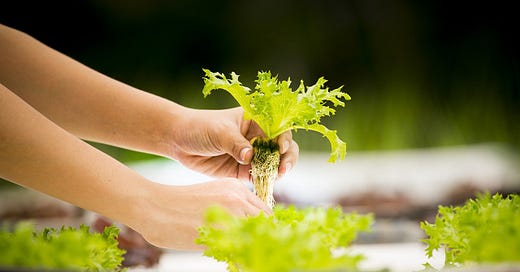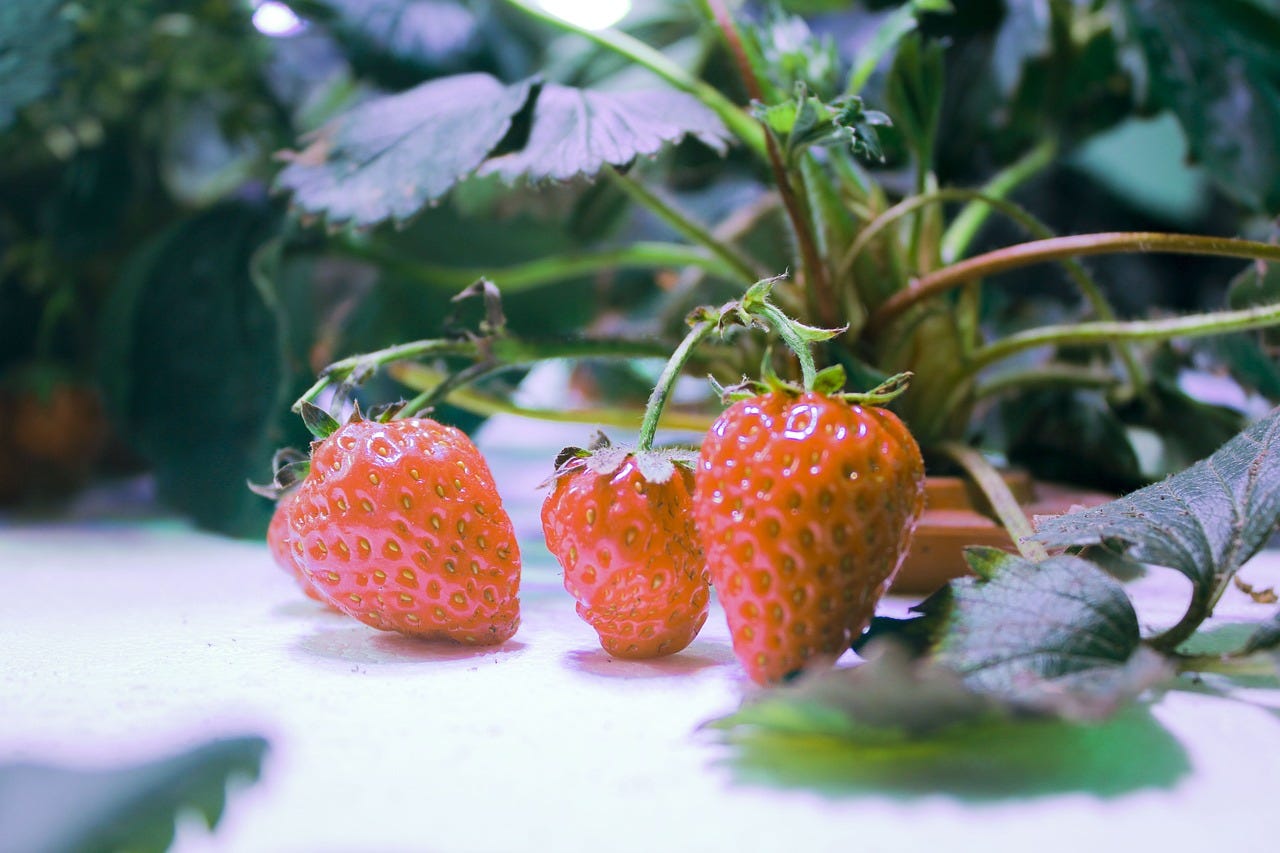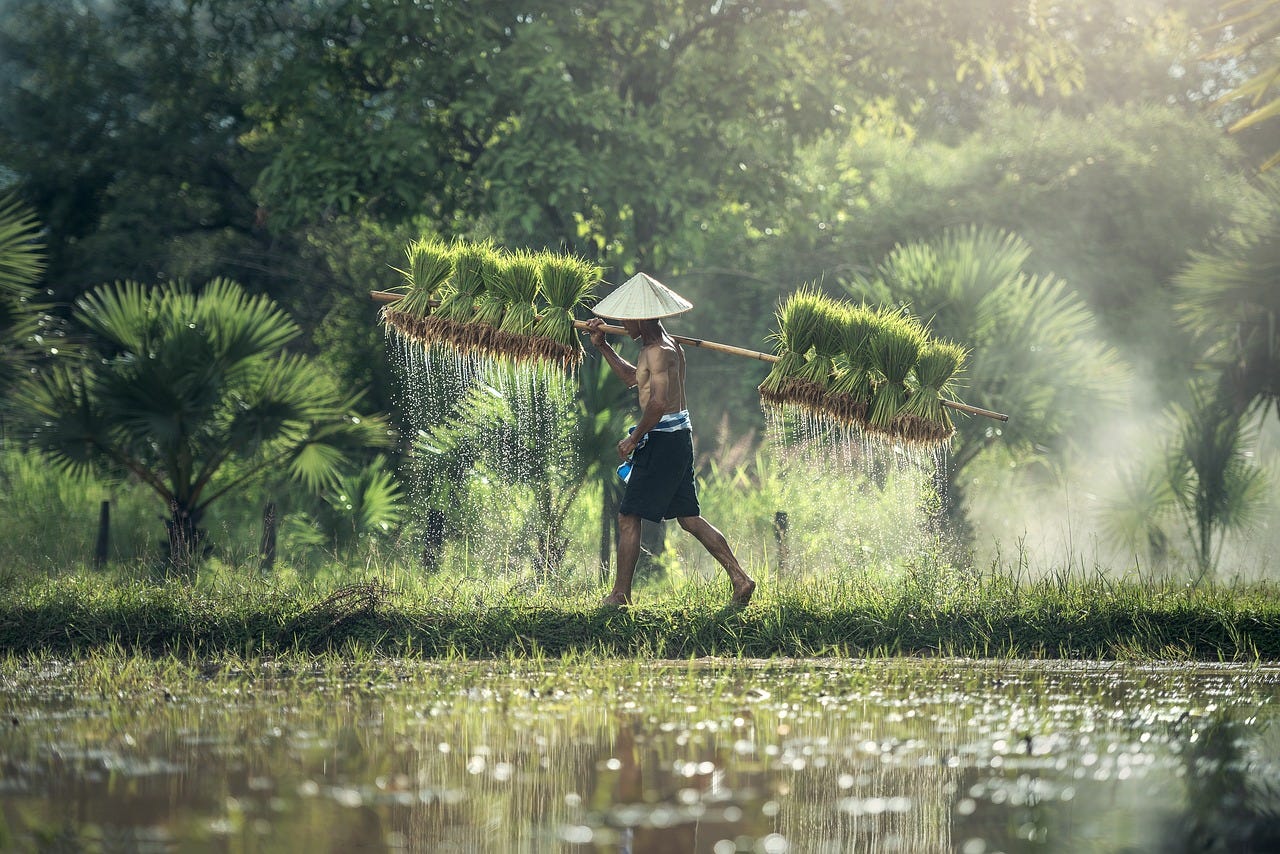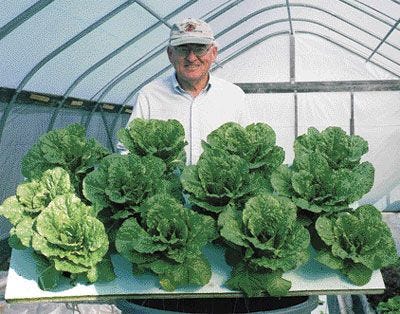Grow Plants in Water the Easy Way
Have you heard about hydroponics? The Kratky Method let's you experiment without needing much knowledge or money.
Photo by sippakorn yamkasikorn from Pixabay
Access to fresh, local food remains a significant challenge in both rural and urban areas, exacerbated by systemic issues like low wages, artificial scarcity, inadequate transportation, and distant grocery stores. Although the resources to address this problem exist, they are often inequitably distributed.
Additionally, as populations grow denser, the availability of land for personal cultivation dwindles. Historical factors, such as the enclosure of common lands, have further limited access to public spaces for subsistence. Hydroponics offers a solution by enabling food production without soil, using nutrient-rich water solutions.
Photo by Tou Chou from Pixabay
This method proves advantageous in either urban or indoor environments, allowing for controlled, year-round cultivation in small spaces like balconies, kitchens, and rooftops. Plants grown hydroponically often experience faster growth and earlier yields when compared to their soil-grown counterparts, thanks to the more easily accessible nutrients and energy.
If you're interested in growing your food using a modern, cost-effective approach, the Kratky Method is an excellent choice. This simple, low-cost form of hydroponics is favored for its minimal reliance on electricity and suitability for indoor and outdoor use. We'll explore the basics of hydroponics, become familiar with Dr. Bernard Kratky's innovative system, and provide step-by-step instructions to help you get started.
What is Hydroponics?
Photo of a chinampa cosecha by Emmanuel Eslava via Wikimedia
Hydroponics, derived from the Greek words "hydro" (water) and "ponos" (labor), is a method of growing plants in water enriched with nutrients rather than in soil. This practice is far from a modern invention; it has deep historical roots, in fact.
In the 13th century, the Aztec civilization utilized floating gardens known as chinampas, which allowed them to cultivate crops on water. Farmers still grow and harvest food from chinampas around Mexico City today. Similarly, the Hanging Gardens of Babylon, one of the Seven Wonders of the Ancient World, is believed to have employed early hydroponic techniques around 600 BC.
Photo of a rice paddy by Sasin Tipchai from Pixabay
Farmers tended to rice paddies in China’s Yangzi River Valley since at least 4000 BC. They raised fish in rice paddies, a type of aquaponics where fish waste feeds food crops. This makes rice paddies one of the oldest continuously practiced forms of hydroponics.
In the 20th century, hydroponics experienced significant advancements, particularly through research conducted by organizations like NASA, which explored the potential of growing food in space. This resurgence of interest has led to the development of various hydroponic systems that enable food production in controlled environments, regardless of soil quality or climate conditions.
The Kratky Method: A Simple, Cost-Effective Solution
Among the various hydroponic systems, the Kratky Method stands out for its simplicity and cost-effectiveness. Named after Dr. Bernard A. Kratky, a researcher at the University of Hawai'i, this method involves a passive, non-circulating hydroponic solution that requires minimal equipment and no electricity.
Who is Dr. Bernard Kratky?
Dr. Bernard A. Kratky has served as professor emeritus at the University of Hawai'i since 1971, specializing in vegetable production and hydroponics. His research has focused on developing low-cost, sustainable agricultural practices, particularly for regions with poor soil quality and limited resources.
The Kratky Method, first introduced in a 2009 research paper, became a popular choice for home gardeners and small-scale producers due to its ease of use and minimal maintenance requirements.
Photo of Dr. Bernard Kratky via Pinterest
How the Kratky Method Works
The Kratky Method is a variation of Deep Water Culture (DWC) hydroponics. It involves suspending plants in net pots above a reservoir filled with a nutrient-rich water solution. Unlike traditional DWC systems, which require constant aeration through air stones or water pumps, the Kratky Method oxygenates plant roots differently.
As the plant consumes water and nutrients, the water level in the reservoir decreases, creating an air gap that provides oxygen to the roots. This passive approach makes the Kratky Method well-suited for off-grid applications or areas with unreliable electricity.
Source: https://bit.ly/3vvxLfE
What Can You Grow with the Kratky Method?
The Kratky Method is versatile, allowing one to cultivate crops like lettuce and spinach. While root vegetables like carrots and onions may not thrive in this setup, other plants such as tomatoes, peppers, strawberries, and herbs can be successfully grown. The key is to match the plant’s water and nutrient requirements to the size of your reservoir.
Setting Up Your Kratky System
Setting up a Kratky system is straightforward and can be done with some materials you may already have at home:
Gather Materials: You'll need a clean container (such as a mason jar, plastic tote, or 5-gallon bucket), a net pot, growing medium (e.g., clay pellets, coco coir, perlite, PON, or rock wool), and a nutrient solution.
Prepare the Container: Drill or cut a hole in the lid of your container to hold the net pot securely. Ensure the container is opaque to prevent light from entering, which can cause algae growth.
Fill with Water and Nutrients: Fill the container with water, leaving space at the top for air. Add the appropriate amount of nutrient solution, following the instructions on the product label.
Plant Setup: Place your plant in the net pot with the chosen growing medium, ensuring the roots come into contact with the nutrient solution. Do not fully submerge the roots, though. They will grow.
Location: Place your Kratky system where it will receive adequate light. If using natural sunlight, an east- or south-facing window works well. Alternatively, you can use a grow light.
Final Thoughts
The Kratky Method offers an accessible entry point into the world of hydroponics, enabling anyone to grow fresh, healthy food with minimal investment. As we face challenges like dwindling arable land and climate change, hydroponics provides a resilient solution that can be adapted to various environments.
By utilizing the Kratky Method, you can contribute to a more sustainable future while practicing time-honored traditions. This technique allows you to try something new without investing much time or energy. Enjoy the fruits (and vegetables) of your labor.
Supplies:
LECA Clay Pebbles: https://amzn.to/47asNZV
Perlite: https://bit.ly/472Xq3k
PON Mineral Plant Substrate: https://amzn.to/4e1yz2q
Net Pots — 2 inches: https://bit.ly/2PxUCrE
Net Pots — 3 inches: https://bit.ly/3gPY4cG
Net Pots — 6 inches: https://bit.ly/3taFPkI
Nutrients — Aerogarden Liquid Nutrients (1 Liter): https://bit.ly/3ySSjX0
Nutrients — FoxFarm: https://bit.ly/3nymgkR
Nutrients — General Hydroponics Flora Series: https://bit.ly/3sZFBfT
How-Tos:
Trees.com: https://bit.ly/3vvxLfE
Kratky in Mason Jars: https://bit.ly/2R5XnB0
Kratky in Totes: https://bit.ly/3gV7ovT
Kratky in 5-gallon buckets: https://bit.ly/3nz48aB
First Published on Medium
Source: https://bit.ly/3vvxLfE











What a great article Jon! This was super helpful, I was looking for something exactly like this to get started with in my new apartment. Although we have a little bit of soil space on our closed balcony, this hydroponic solution will be very useful! And thanks for even recommending which plants to start with. I will 100% be trying this out, and I'll keep you posted on how it goes :D